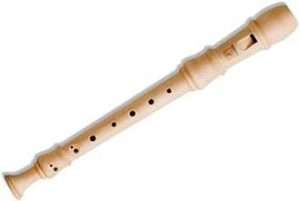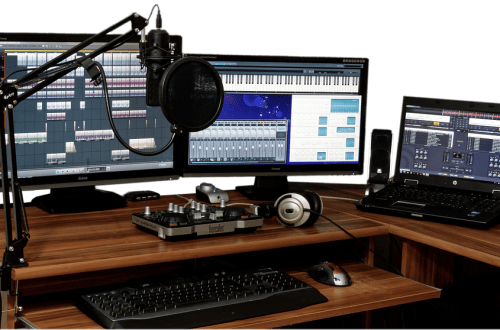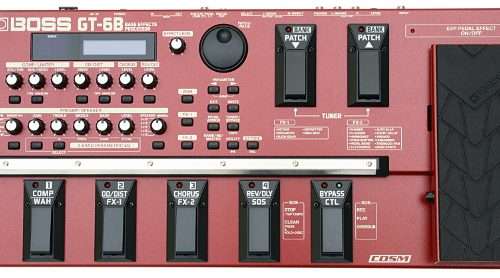
History of the Recorder
Contents
Block flute is a type of flute. It represents a wind musical instrument of the whistle type.  This is a longitudinal flute, which, unlike the transverse one, is held longitudinally, as the name itself testifies. Air is blown into a hole made at the end of the tube. Near this hole there is another one – the outlet, with a face that cuts through the air. All this resembles a whistle device. There are special holes for fingers on the tube. To extract different tones, the holes are half or completely covered with fingers. Unlike other varieties, there are 7 valves on the front side of the recorder and one additional (octave) valve on the back side.
This is a longitudinal flute, which, unlike the transverse one, is held longitudinally, as the name itself testifies. Air is blown into a hole made at the end of the tube. Near this hole there is another one – the outlet, with a face that cuts through the air. All this resembles a whistle device. There are special holes for fingers on the tube. To extract different tones, the holes are half or completely covered with fingers. Unlike other varieties, there are 7 valves on the front side of the recorder and one additional (octave) valve on the back side.
Advantages of a recorder
The material for the manufacture of this tool was mainly wood. Maple, boxwood, plum, pear, but most of all mahogany were well suited for this purpose.  Today, many recorders are made of plastic. Such a tool is more durable, cracks do not appear on it over time, as happens with a wooden one. The plastic flute has excellent musical capabilities. Another significant advantage of the recorder is its low price, which makes it an affordable wind instrument. Today, the recorder is used in folk music, for teaching children, it does not sound in classical musical works.
Today, many recorders are made of plastic. Such a tool is more durable, cracks do not appear on it over time, as happens with a wooden one. The plastic flute has excellent musical capabilities. Another significant advantage of the recorder is its low price, which makes it an affordable wind instrument. Today, the recorder is used in folk music, for teaching children, it does not sound in classical musical works.
The history of the appearance and distribution of the tool
The flute, as you know, is the oldest musical instrument known to mankind in prehistoric times. Its prototype is considered to be a whistle, which was improved over time by adding finger holes to change the tone of the sound. The flute spread almost everywhere in the Middle Ages.  In the 9th century AD. the first mentions of the recorder appear, which could no longer be confused with the flute. In the history of the appearance and development of the recorder, several stages should be distinguished. In the 14th century, it was the most important instrument that accompanied singing. The sound of the instrument was not loud, but very melodic. It is believed that itinerant musicians contributed greatly to its spread. In the 15th and 16th centuries, the recorder ceases to play the leading role of musical instruments that perform vocal and dance music. The self-instruction manual for playing the recorder, as well as musical notations, first appeared in the 16th century. The Baroque era was marked by the final division into vocal and instrumental music. The sound of the technologically improved recorder has become richer, richer, and a “baroque” recorder appears. She is one of the leading musical instruments, many works are created for her. G. F. Handel, A. Vivaldi, J. S. Bach wrote for the recorder.
In the 9th century AD. the first mentions of the recorder appear, which could no longer be confused with the flute. In the history of the appearance and development of the recorder, several stages should be distinguished. In the 14th century, it was the most important instrument that accompanied singing. The sound of the instrument was not loud, but very melodic. It is believed that itinerant musicians contributed greatly to its spread. In the 15th and 16th centuries, the recorder ceases to play the leading role of musical instruments that perform vocal and dance music. The self-instruction manual for playing the recorder, as well as musical notations, first appeared in the 16th century. The Baroque era was marked by the final division into vocal and instrumental music. The sound of the technologically improved recorder has become richer, richer, and a “baroque” recorder appears. She is one of the leading musical instruments, many works are created for her. G. F. Handel, A. Vivaldi, J. S. Bach wrote for the recorder.
The recorder goes into the “shadow”
In the 18th century, the value of the flute gradually decreases, from the leading instrument it becomes the accompanying one. The transverse flute, with a louder sound and wider range, quickly replaced the recorder. Old works of famous composers are being rewritten to the new flute, and new ones are being written. The instrument was removed from the composition of symphony orchestras, sometimes used in operettas and among amateurs. Almost forgot about the instrument. And only in the middle of the 20th century the recorder gained popularity again. Of no small importance in this was the price of the instrument, which is many times cheaper than an expensive fancy transverse flute.





